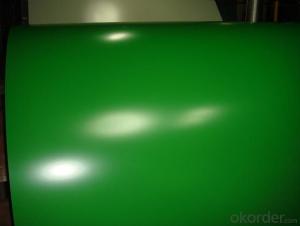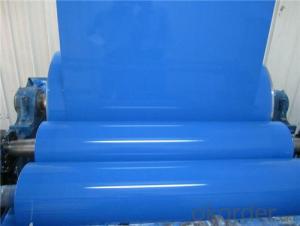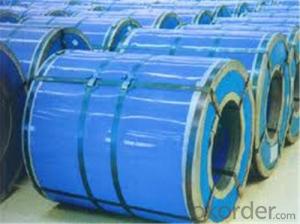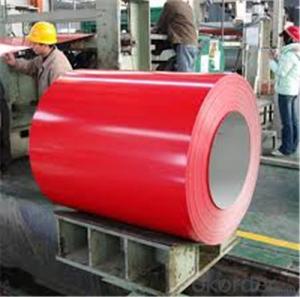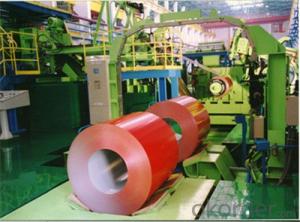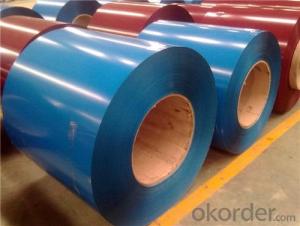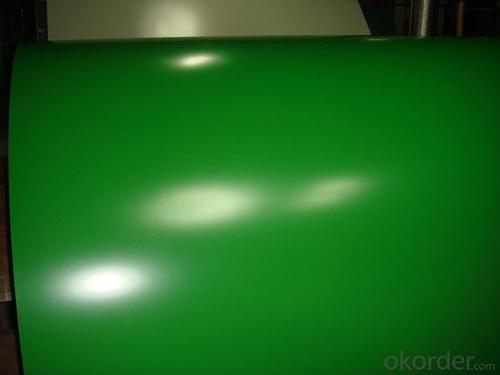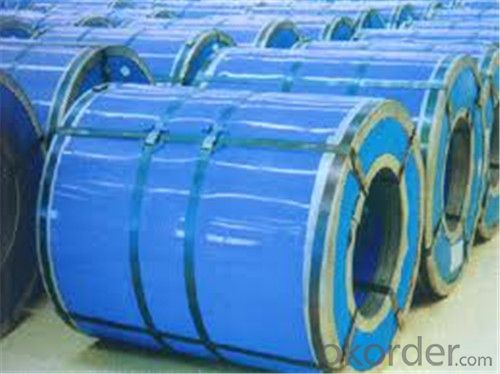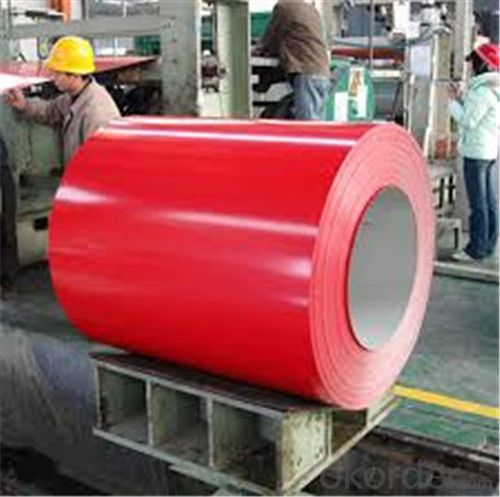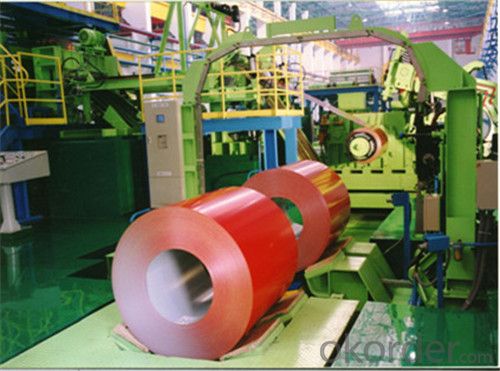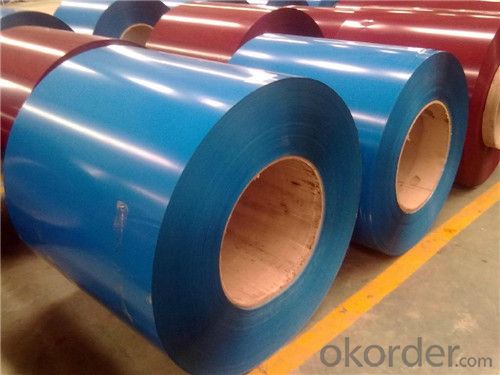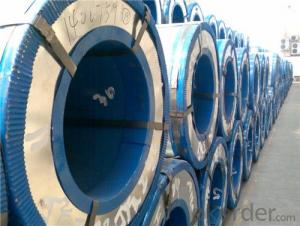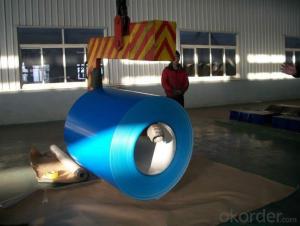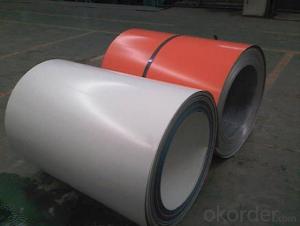Z33 BMP Prepainted Rolled Steel Coil for Constructions
- Loading Port:
- Shanghai
- Payment Terms:
- TT OR LC
- Min Order Qty:
- 100 m.t.
- Supply Capability:
- 30000 m.t./month
OKorder Service Pledge
OKorder Financial Service
You Might Also Like
Structure of Z33 BMP Prepainted Rolled Steel Coil for Construction
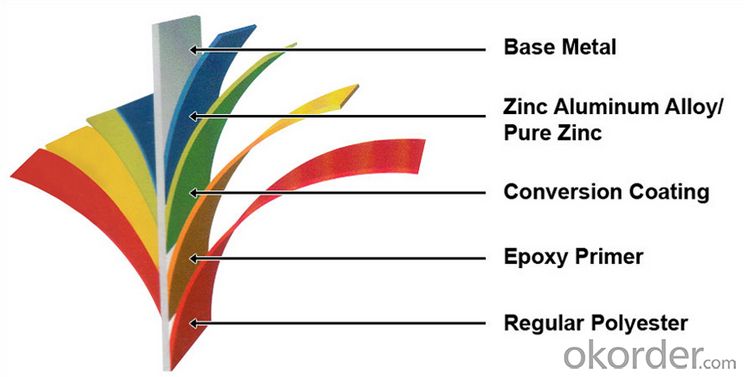
Description of Z33 BMP Prepainted Rolled Steel Coil for Construction
EN 10147 Structure hot dip galvanized steel coil S250GD+Z, S350GD+Z (SGC340, SS275, SS340)/Custom Deep drawing hot dip galvanized steel coil DX52D+Z, DX53D+Z, S
Galvanized steel is taken cold rolled steel as the base metal, after continuous hot dip galvanizing process, the product produced is an excellent resistance to atmospheric corrosion coating steel coil, as the steel gets coated in layers of zinc and rust won't attach this protective metal; Cold rolled plate by hot-dip galvanizing may extend the service life of 15-20 years.
For countless outdoor, marine, or industrial applications, galvanized steel is an essential fabrication component. Hot dip galvanized steel is used in applications where steel may be exposed to weather, but where stainless steel is too expensive.
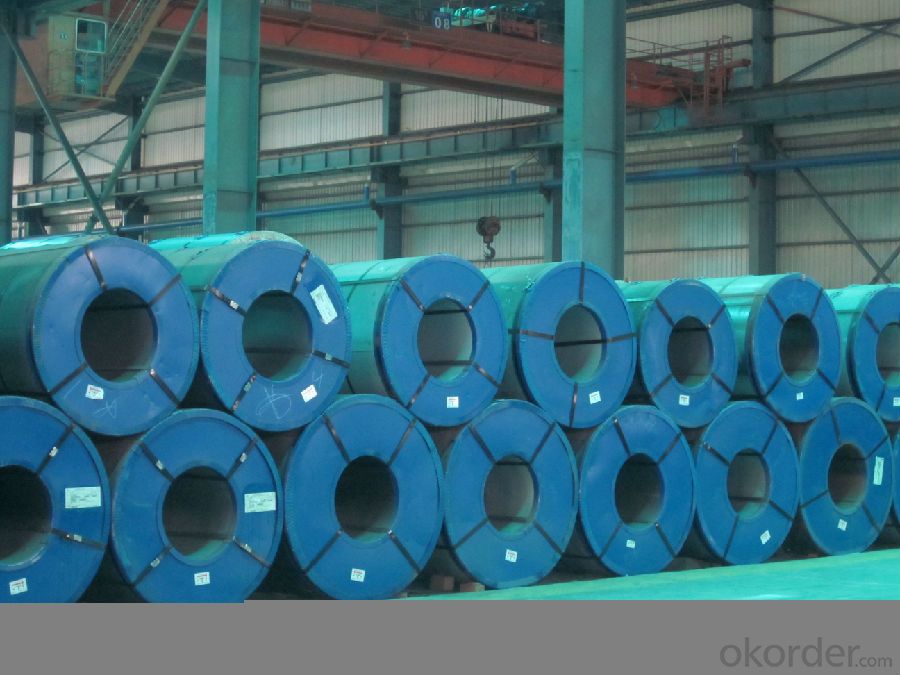
Main Feature of Z33 BMP Prepainted Rolled Steel Coil for Construction
1. Our company produce various specification and models and national standards of galvanized steel coil
2. Using high-quality material and advanced production technology and equipment for processing
3. Applicable to a humid climate and the harsh corrosive environment
4. Products has been all over the country more than 20 provinces, municipalities and autonomous regions, and have been exported to Europe, North American, the Middle East, the South East Asia, Africa, Asia,European and other countries and regions, well received by our buyer.
Applications of Z33 BMP PPGI Prepainted Rolled Steel Coil for Construction
A. Corrugated design makes it excellent waterproof performance
B. Materials as prepainted steel sheets, galvanized steel sheets, galvalume (Al-Zn coated sheets) are available to make corrugated sheet.
C.Those material are durable, anti-corrosion in bad weather for 20-30 years based on it's Zinc(Galvanized) coating or AZ (Galvalume) coating.
D. Different shape of the sheet make it suitable for any style of buildings.
E.Easy to install, no need special tools to fix the sheet.
F.Light weight due to high strength to weight ratio of steel. Light weight means easier handling lower shipping costs, easier installation
G. Different color is availbe base on the RAL Standard make your building more beautiful.
H. We will provide the best solutions if you don't have a exact idea of the specification you want for the steel sheet based on your weather conditions, engineering structure, construction budget and so on.
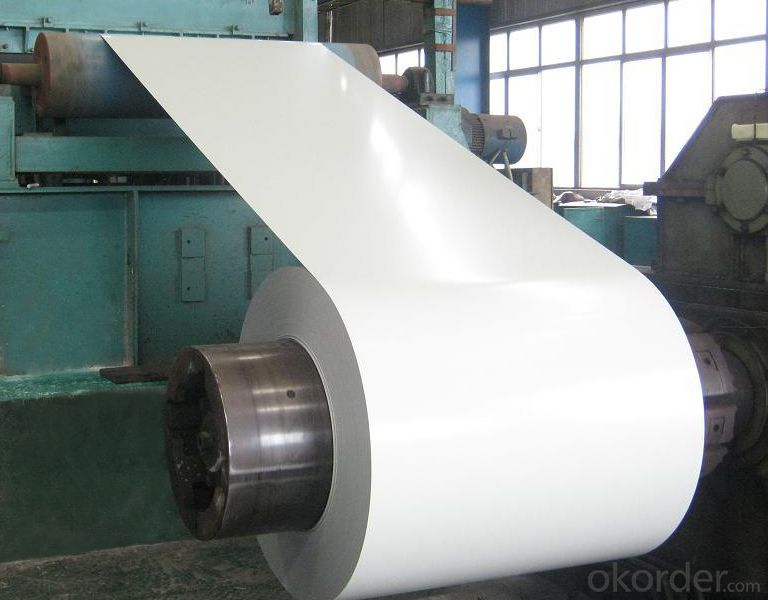
Specifications of Z33 BMP Prepainted Rolled Steel Coil for Construction
Product | Z33 BMP Prepainted Rolled Steel Coil for Construction |
Material Grade | SGCC / SGCH / DX51D+AZ, etc |
Thickness | 0.6-3.0mm |
Width | 500-1500mm |
Tolerance | Thickness: +/-0.02mm , Width:+/-2mm |
Zinc-coating | Z30-150g/m2 |
Technique | Raw material: Hot rolled steel coil --> Cold rolled_>hot dipped galvalume |
Surface | Dried, Chromated, Unoiled |
Spangle | Regular spangle , small spangle, zero spangle |
ID | 508MM 610MM |
Coil weight | 1-25MT |
Export package | Cardboard inner sleeves, Waterproof paper, galvanized steel covered and steel strip packed |
FAQ of Z33 BMP Prepainted Rolled Steel Coil for Construction
We have organized several common questions for our clients,may help you sincerely:
1. How Can I Visit There?
Our company is located in Tianjin City, China, near Beijing. You can fly to Tianjin Airport Directly. All our clients, from home or aboard, are warmly welcome to visit us!
2. How Can I Get Some Sample?
We are honored to offer you sample.
3. Why choose CNBM?
Our delivery time about 15-20days for standard sizes, if you have other requirements like hardness, quanity and width ,it is about 20-40days. But don't worry we also try our best for the delivery time ,because time longer and our cost is higher.
- Q: How are steel coils used in the production of steel nails?
- Steel coils are used in the production of steel nails as they serve as the primary raw material. The coils are unwound and fed into a nail-making machine, where they are cut, shaped, and formed into individual nails. This process allows for efficient and consistent nail production, ensuring high-quality and durable nails for various construction and manufacturing purposes.
- Q: I found this amazing kid on youtube - is he using nylon or steel strings?(I'm buying my first guitar! helpp)oh and is fingerstyle also possible in steel string guitar? does it hurt?(I might sound really stupid-..)thanks a lot
- Lol that's sung ha jung. You can play with both types but it is easier to start off learning in nylon.
- Q: How are steel coils inspected for coil weight accuracy?
- Steel coils are inspected for coil weight accuracy using weighing scales or load cells. The coils are placed on the scales or load cells, and the weight is measured to ensure it matches the specified weight range.
- Q: I've been looking for lots of info on this steel. Cold Steel uses it now in their knives replacing the AUS-8 steel. I was hoping somebody had a knife with this steel who could give me some real first hand knowledge not just numbers. Thanks!
- I carry a french knife that has been made the same way for 400 years , the manufacturer is called Opinel,...they fold up and are carbon steel and for what I do are very period correct for anything from 1700's through 1800's...any way they are very good and come in like 5 different sizes.... check and see if they have a web site....
- Q: So here's the deal:I recently bought McCann's Instant Steel-Cut Oatmeal, and I'm wondering about any possible nutritional differences between the instant and regular stove-top. In case you haven't seen it, instant steel-cut comes in individual packets and is cooked only by adding boiling water, the same as instant rolled oatmeal (i.e. Quaker).When I asked about instant vs. stove-top rolled oats, my doctor said there are no significant nutritional differences, but since the main health appeal of steel-cut is the coarse grain, it doesn't seem possible for the finer ground instant to be as nutritious.I can't find much info about this, so any help is appreciated!
- Most people who are used to rolled oats have a very hard time adjusting to steel cut oats that are cooked only 30 minutes. For many, it's not much different than eating them raw. (Raw, soaked oats is called cram. Having to eat uncooked oats, as only the poorest would do, gives us the expression 'to cram it down your throat'.) Better still is to cook them thoroughly at night then reheat portions for breakfast if you're in a hurry. They'll keep about five days at a time under refrigeration. Any small nutritional loss from longer cooking is more than compensated by the better digestibility of well-cooked oats. That is, the nutrition is wasted if the oats pass undigested through the body. For most of us, that would happen. Indeed, we are not cows. Neither are we horses. People need to cook their oats.
- Q: Can steel coils be coated with nickel?
- Yes, steel coils can be coated with nickel.
- Q: How does adding carbon to Iron make it stronger? How does steel look the molecular structure in comparison to Iron? looking for a very scientific answer =]
- Cast Iron' is typically brittle, while 'Maleable Iron' has a small percentage of carbon which allows it to be hammered and formed. Steel is an alloy that consists mostly of iron and has a carbon content between 0.2% and 2.1% by weight, depending on the grade. Carbon is the most common alloying material for iron. Steel is a crystalline structure of iron molecules interspersed with carbon molecules. This is properly known as cementite. The hardness and malleability of steel depends not only on the carbon content, but on how the carbon and iron molecules are arranged to one another. Internal stresses in the steel's crystalline structure will increase or decrease depending on the temperature it is subjected to and the rate at which molten steel is cooled. This 'tempering' can increase the strength of the steel at the expense of brittleness.
- Q: How are steel coils used in the production of automotive engine components?
- Steel coils are used in the production of automotive engine components by being processed and shaped into various parts, such as pistons, crankshafts, and connecting rods. The coils are first cut, stamped, and formed into the desired shapes, and then undergo heat treatment and other machining processes to enhance their strength and durability. These components are crucial for the proper functioning of an automotive engine, as they provide structural support and help convert the energy generated by the combustion process into mechanical motion.
- Q: What are the different methods of coil joining for steel coils?
- There are several different methods of coil joining for steel coils, each with its own advantages and limitations. Some of the commonly used methods include: 1. Welding: This is one of the most popular methods of coil joining. It involves using heat to melt and fuse the edges of the steel coils together. Welding can be done using various techniques such as arc welding, resistance welding, or laser welding. It provides a strong and durable joint, but it can be time-consuming and may require skilled operators. 2. Mechanical fastening: This method involves using mechanical fasteners like clips, staples, or bolts to join the edges of the steel coils. Mechanical fastening is relatively quick and easy, and it allows for easy disassembly if required. However, it may not provide as strong a joint as welding and can be susceptible to loosening over time. 3. Adhesive bonding: Adhesive bonding involves using a suitable adhesive or glue to bond the edges of the steel coils together. This method provides a strong and uniform joint, and it can also help to seal and protect the joint from corrosion. However, adhesive bonding may require surface preparation and curing time, and it may not be suitable for high-temperature applications. 4. Interlocking or tongue-and-groove joints: This method involves shaping the edges of the steel coils in a way that they interlock or fit together like a puzzle piece. Interlocking joints provide good alignment and can be easily assembled and disassembled. However, they may not provide as strong a joint as welding or mechanical fastening. 5. Coil-overlapping: In this method, the edges of the steel coils are overlapped and clamped together using mechanical means. Coil-overlapping is a simple and cost-effective method, but it may not provide a strong joint and can result in uneven coil edges. It's important to consider factors such as the application requirements, strength requirements, cost, and production efficiency when choosing the appropriate method of coil joining for steel coils.
- Q: What are the different methods of coil slitting for steel coils?
- There are several different methods of coil slitting for steel coils, each of which serves a specific purpose and is used in different industries. Here are some of the common methods: 1. Rotary shear slitting: This is the most widely used method for coil slitting. It involves using a set of rotating knives to cut the steel coil into smaller strips. The rotary shear slitting method is known for its high speed and accuracy, making it ideal for large-scale production. 2. Loop slitting: In this method, the steel coil is fed through a loop control system that maintains a constant tension. The coil is then cut into strips using a rotating knife. Loop slitting is commonly used for thinner gauge materials and is known for its ability to produce clean, burr-free edges. 3. Oscillating shear slitting: This method involves using a set of oscillating knives to cut the steel coil. The knives move back and forth in a rapid motion, creating a shearing effect that cuts through the coil. Oscillating shear slitting is often used for thicker gauge materials and can handle higher tensile strengths. 4. Crush cut slitting: Crush cut slitting is a method where the steel coil is cut by pressing a circular blade against the coil. The blade crushes the material, creating a cut. This method is commonly used for softer materials or when edge quality is not critical. 5. Slit edge rolling: Slit edge rolling is a method that involves rolling the edges of the steel coil after it has been slit. This process smooths out the edges and improves the overall appearance of the strips. Slit edge rolling is often used for applications that require a high-quality finish. 6. Laser slitting: Laser slitting is a newer method that uses a laser beam to cut through the steel coil. This method is precise and can handle a wide range of thicknesses. Laser slitting is commonly used for high-precision applications where edge quality is critical. These are just a few of the different methods of coil slitting for steel coils. The choice of method depends on factors such as the thickness and tensile strength of the material, the required edge quality, and the intended application of the slitted strips.
Send your message to us
Z33 BMP Prepainted Rolled Steel Coil for Constructions
- Loading Port:
- Shanghai
- Payment Terms:
- TT OR LC
- Min Order Qty:
- 100 m.t.
- Supply Capability:
- 30000 m.t./month
OKorder Service Pledge
OKorder Financial Service
Similar products
Hot products
Hot Searches
Related keywords
